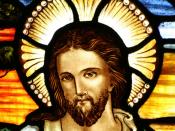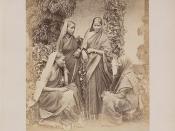Chapter 10 described the rise of Christianity and the transformation of Roman civilization from 284 CE to 610 CE. Christianity was the major cultural trend of Roman world and later became the state religion which contributed to develop the West. When urban life started to decline because of lacking agricultural production emperor Diocletian helped stabilize Rome's economical by turning to east which was good for trade and luxury goods and added more architectural thoughts by constructing a palace and the largest baths. After Diocletian, one of the original caesars named Constantine who preferred Christianity ruled the West. The transformation probably began when he moved his government from Rome to Constantinople because Romans experienced the difference between rich and poor as well as language complexity. After Diocletian and Theodosius, Germanic Barbarian who were illiterate and not urbanized, took over The Roman West and converted to Christianity.
Even though, Christianity was formed by Jesus and St.
Paul centuries before Constantine, it became popular during third and fourth century BC. At first The New Testament, The Gospels and Gospel of Mark tell the story of the career of Jesus which might have been inaccurate. One of Jesus' successors like the Apostle Paul proclaimed Christianity as a universal religion, placed Jesus as a Christ, started the ministry of the Church. People like carpenters, fishermen, and tentmakers converted to Christianity to feel more secure. Christianity became the most powerful religion because it didn't exclude women and because of its organization. When Emperor Constantine converted as a Christian, it grew more faith for Christianity in peoples' heart. There were priests and member services like nursing, support of unprotected, and burial. There were controversies over doctrinal matters and conflicts however, the church formed the organization of clergy and introduced the idea of papacy as well as...


